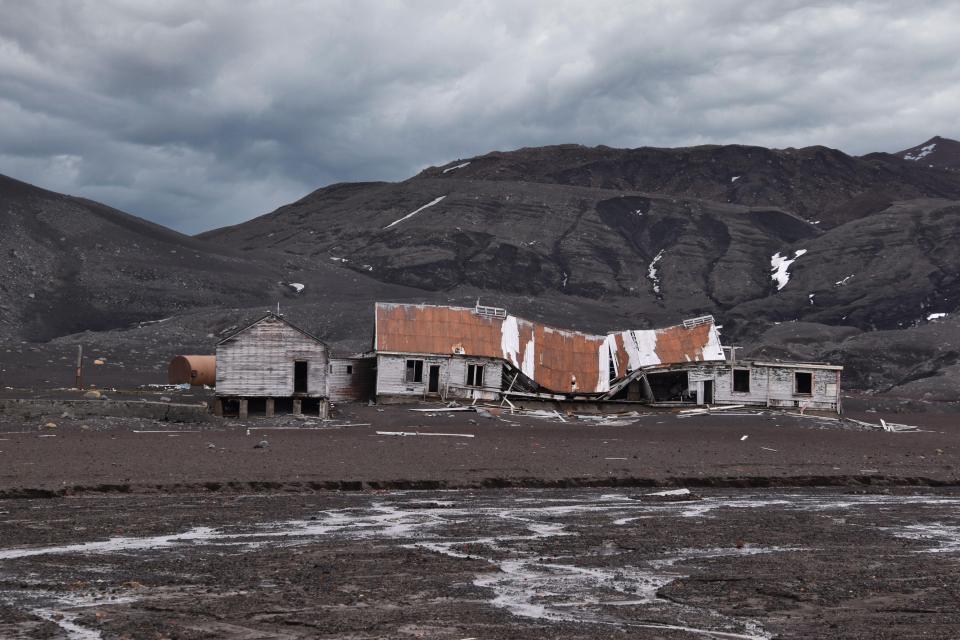AN EERIE island abandoned off the coast of the Antarctic Peninsular hides a dark secret behind its deceptively welcoming appearance.
Part of the South Shetland Islands, Deception Island is a horseshoe-shaped island, filled with stunning glaciers, penguins, hot springs and the ruins of the historic Hektor Whaling Station.
The deceptively pretty island hides a dark secret – the island is just one of two active volcanoes in Antarctica.
Its main harbour, Port Foster, is a flooded caldera where ships can sail into the centre.
The sunken caldera was first formed after a violent eruption approximately 10,000 years ago.
It last erupted in August 1970, as well as eruptions in 1967 and 1969.
The polar Pompeii is a time capsule, that preserved Antarctica’s history after buildings were abandoned overnight.
The island was first discovered by British Sealers William Smith and Edward Bransfield in January 1820 and was first visited by American sealer Nathaniel Palmer in November 1820.
It was the American Palmer who dubbed the island “Deception Island” because of its “normal” appearance.
For a short time, Deception Island was the home to the fur-sealing industry in the South Shetlands, however, it was abandoned in 1825 after over-hunting meant fur seals were close to extinction.
The island later became popular for whaling, with as many as several hundred men living on Deception Island during the Antarctic summers.
In 1908, the British government formally declared the island to be under British control, and established postal services and appointed a magistrate and customs officer for the island.
A cemetery was built in 1908, a radio station in 1912, a hand-operated railway also in 1912, and a small permanent magistrate’s house in 1914.
The cemetery, by far the largest in Antarctica, held graves for 35 men along with a memorial to 10 more presumed drowned.
For 20 years the whaling industry thrived until a new whaling development meant ships were fitted with the necessary technologies to process whales.
It meant whaling companies no longer needed to find shelter in the harbours of Deception Island.
By 1931, the last factory was closed and the island remained abandoned for another 10 years.
In 1942, an Argentine party aboard the Primero de Mayo visited and left signs and painted flags declaring the site Argentine territory, however the HMS Carnarvon Castle.
In 1944, the island was used as part of Operation Tabarin, which was carried out to deny safe anchorages to enemy raiding vessels and to gather meteorological data for allied shipping in the South Atlantic.
The first recorded volcanic activity was in 1842, and a visit by American elephant-sealer Ohio, which reported the southern shore was “in flames”.
However, it was the eruption in 1967 that proved the most destructive.
The blast buried Chile’s Aguirre Cerda research base which had previously been established in 1955, in ash and rock just north of Whalers Bay at Pendulum Cove.
The 1967 eruption also damaged a British base (Station B) that the Royal Navy established in 1944 on the site of the abandoned whaling station.
Mud flows from the 1969 eruption destroyed many buildings and engulfed the whalers’ graveyard, which held 35 tombs.
However, not all the buildings were destroyed by the volcanic activity.
The old accommodation block has a slump in its middle, with pockets of snow now gathering next to old desks and rusted ovens.
Nearby are rotting whaleboats, timber barrels and a scattering of sun-bleached whale bones.
While the island is abandoned once more, the island is now a popular tourist destination.
It also has two research stations operated by Argentina and Spain during the summer.
The island is governed by the Antarctic Treaty which was signed in 1959. There were originally 12 signatories, including Argentina, Australia, Belgium, Chile, France, Japan, New Zealand, Norway, South Africa, the Soviet Union, the United Kingdom, and the United States.
As of 2024, there are 57 parties to the treaty, with 29 countries given voting status.














